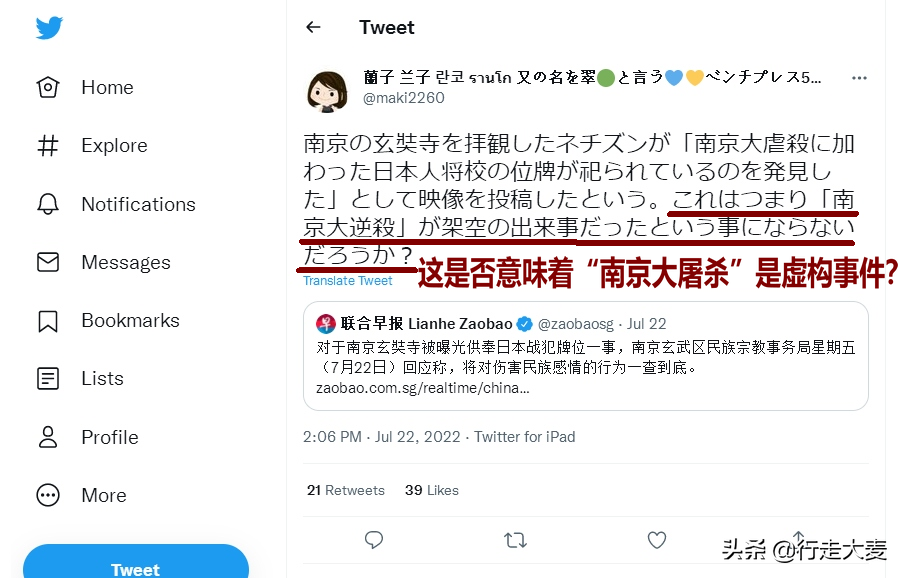Shocking and angry, the "Xuanzang Temple Ghost Worship" incident has stepped out of the country, and overseas media have reported and attracted the attention of netizens. A Japanese netizen named "maki2260" reprinted the message: "Does this mean that the 'Nanjing Massacre' is fictional?" ”

The attitude of some Japanese netizens
The erroneous remarks of individual Japanese netizens have been strongly countered by Chinese netizens. Chinese netizen Stan replied: "You can insult your own INTELLIGENCE, but don't ignore the emotions of the victims." This attitude of yours can only be exchanged for making me feel that Abe Shinzo deserves to die at the hands of his own people! ”
Chinese netizen xswlggj replied angrily: "[The Nanjing Massacre] is not a fiction, and the number of people [victimized] is even more than 300,000." Is it so hard to admit your sins, it's disgusting!!! ”
Chinese netizens argue with reason
Another netizen said that some of Xuanzang's remains are currently housed in Ci'en Temple in Mount Hualin, Saitama Prefecture, Japan.
Some people say that some of the Relics of Xuanzang's skull exist in Japan's Ci'en Temple
Searching for network information, it was learned that in 1943, with the participation of the Japanese army invading China, the Xuanzang parietal relics that had just been found in Nanjing were torn apart and placed in different places for worship.
The first theory is that Xuanzang's parietal relics were divided into four parts, two of which were brought back to Japan and two of which remained in China. Later, the two parts were separated and placed in different places to make offerings.
The second theory is that Xuanzang's parietal relics are divided into six parts, one in Japan, and one each in Beijing, Nanjing, Tianjin, Guangzhou, and Chengdu.
At first, the Nanjing share was placed in the Wuzhou Pagoda of Xuanwu Lake, and in 1973 it was moved to linggu temple. The Japanese sent Master Hideho Kuramura to personally welcome him and enshrine it in Ci'en Temple in Saitama Prefecture, Japan. The ones in Guangzhou and Beijing were lost in a decade of unrest, while opinions were divided elsewhere.
See the original source
https://www.bilibili.com/read/cv14994267/
Every Chinese should keep history in mind and cultivate and strengthen patriotic education!